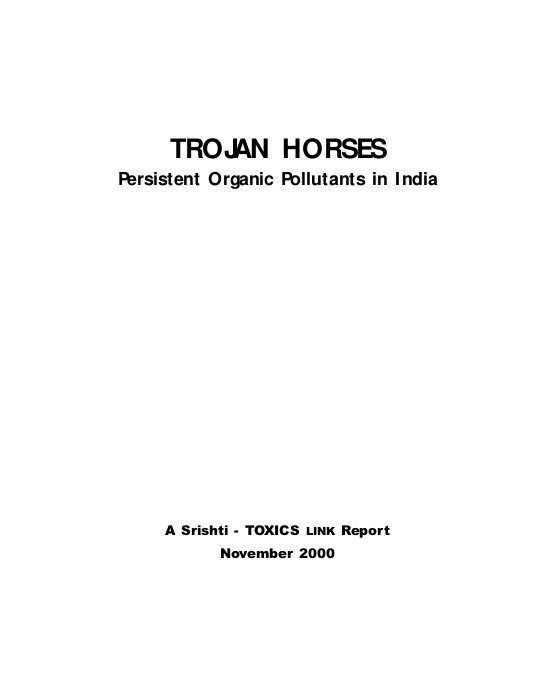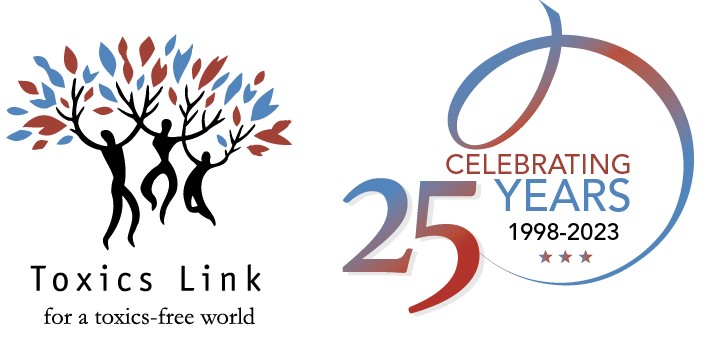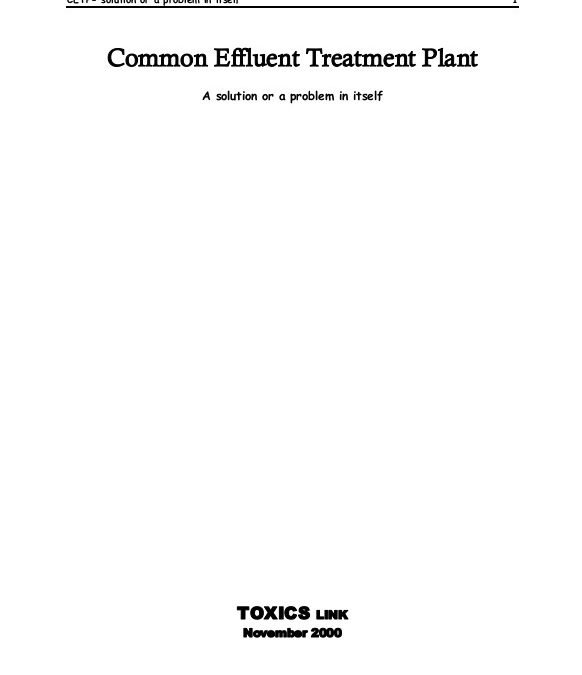
TROJAN HORSES: Persistent Organic Pollutants in India
This publication details the pernicious toxic chemicals – Persistent Organic Pollutants (POPs) — focussing on the production and consumption patterns, trade and budgetary regimes, covered regulations and policies, sources and control measures. It also addresses the issue of pesticide loads in the environment, humans and foods and how they can be dealt using bioenvironmental control measures as an alternative The last century can easily be called the era of chemicals. More than 18 million chemicals were synthesised during this time and about a hundred thousand of them came into commercial use. Unfortunately, not all of them were safe from an environment and human health standpoint. The effects of only a handful, less than a few thousand, of these are known and that too partially. Of the thousand odd chemicals recognized as harmful, more than 50% are based on the element chlorine. In 1995 the United Nations Environmental Program (UNEP) decided to eliminate 12 such chemicals, all organochlorines, from world chemistry. These 12 were classified as “POPs” or “Persistent Organic Pollutants” owing to their similar toxicity in behaviour. Of the list, nine were pesticides and fungicides, and one was polychlorinated biphenyl (PCB), used as a dielectric for electrical equipment. The last two are dioxins and furans, unintentionally produced as by-products of processes such as the manufacture of paper and pulp, and the incineration of waste, particularly medical waste, containing plastics like polyvinyl chloride (PVC). POPs have particularly pernicious toxic qualities. For one, they transport over long distances. For example, though PCBs were never produced in Alaska, the Inuit people carry some of the highest levels of this contaminant. Secondly, POPs are fat soluble or lipophilic, and most of the contamination is through the consumption of fatty food, such as fish and marine animals. They are also bio-accumulative and bio-magnified. Hence a POP deposited on grass would appear in cow’s milk, or through algae in the water in seals, accumulating and increasing in quantity (magnifying) as it went up the food chain. But, most frighteningly, POPs persist in our bodies as well as in the environment, without breaking down for very long times. So though DDT was banned in the USA more than a quarter century ago, it still ‘persists’ in the sediments of the Great Lakes, reducing fertility in Bald Eagles feeding off fish there. India has as yet to recognise its responsibility towards its environmental and citizen’s health. DDT levels in mother’s breast milk here are amongst the highest in the world, with the capital city of Delhi topping the list. PCBs are not regulated, with the government denying even the possibility of their existence here, unable to explain high levels found in soil sediments in the river Yamuna. Hexachlorobenzene, (one of the 12 POPs) has never been manufactured in India, yet food tested in North India has been found laden with very high levels, probably a by-product of chloroform production. Dioxins and furans have never been measured, yet there is a massive government supported programme of the Ministry of Non-Conventional Energy Sources to provide subsidies for waste incineration, one of the largest sources of dioxin and furan production worldwide. DDT has been banned for agricultural use, yet it is reportedly used widely by farmers. The existence of stockpiles of obsolete POPs is continuously denied, yet these have been recorded and reported widely. India remains one of the two counties, besides China, to manufacture DDT, and promote its use, even though its effectiveness will not be more than a few years with growing resistance to the chemical. The answer lies in a more informed and aware citizenry to counter a State that believes in denial and ineffective regulation, along with an industry that remains unmoved towards its social responsibility.

